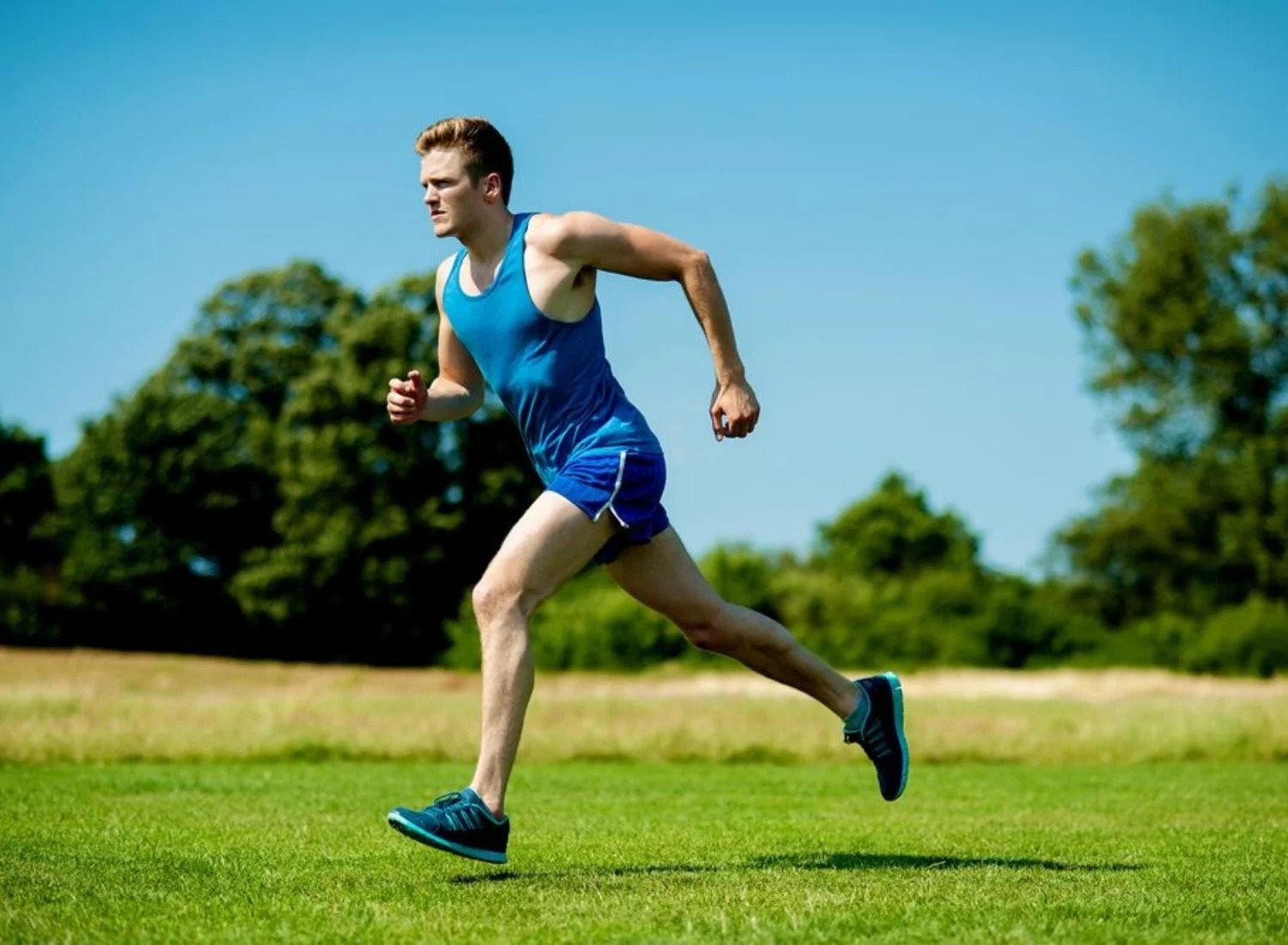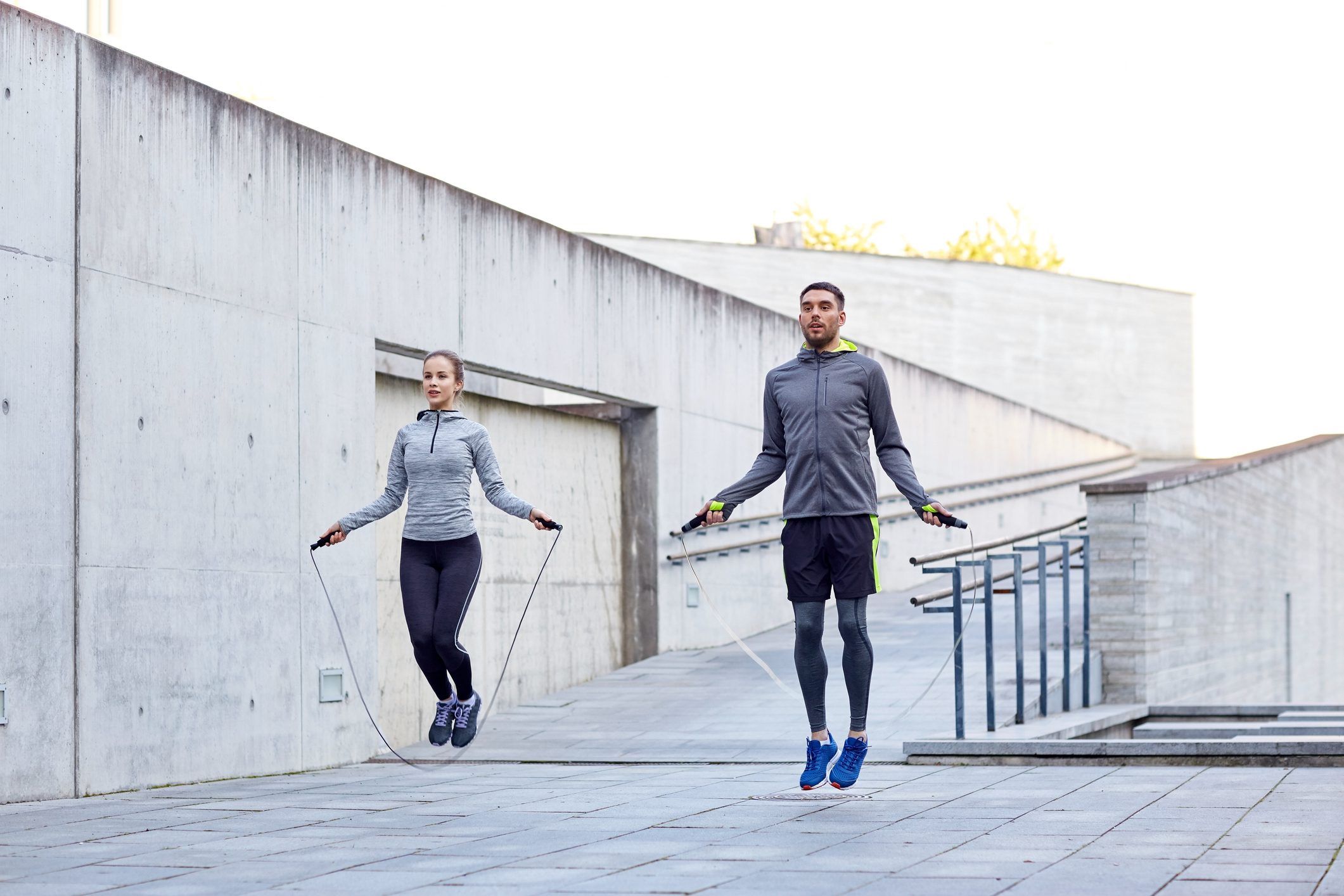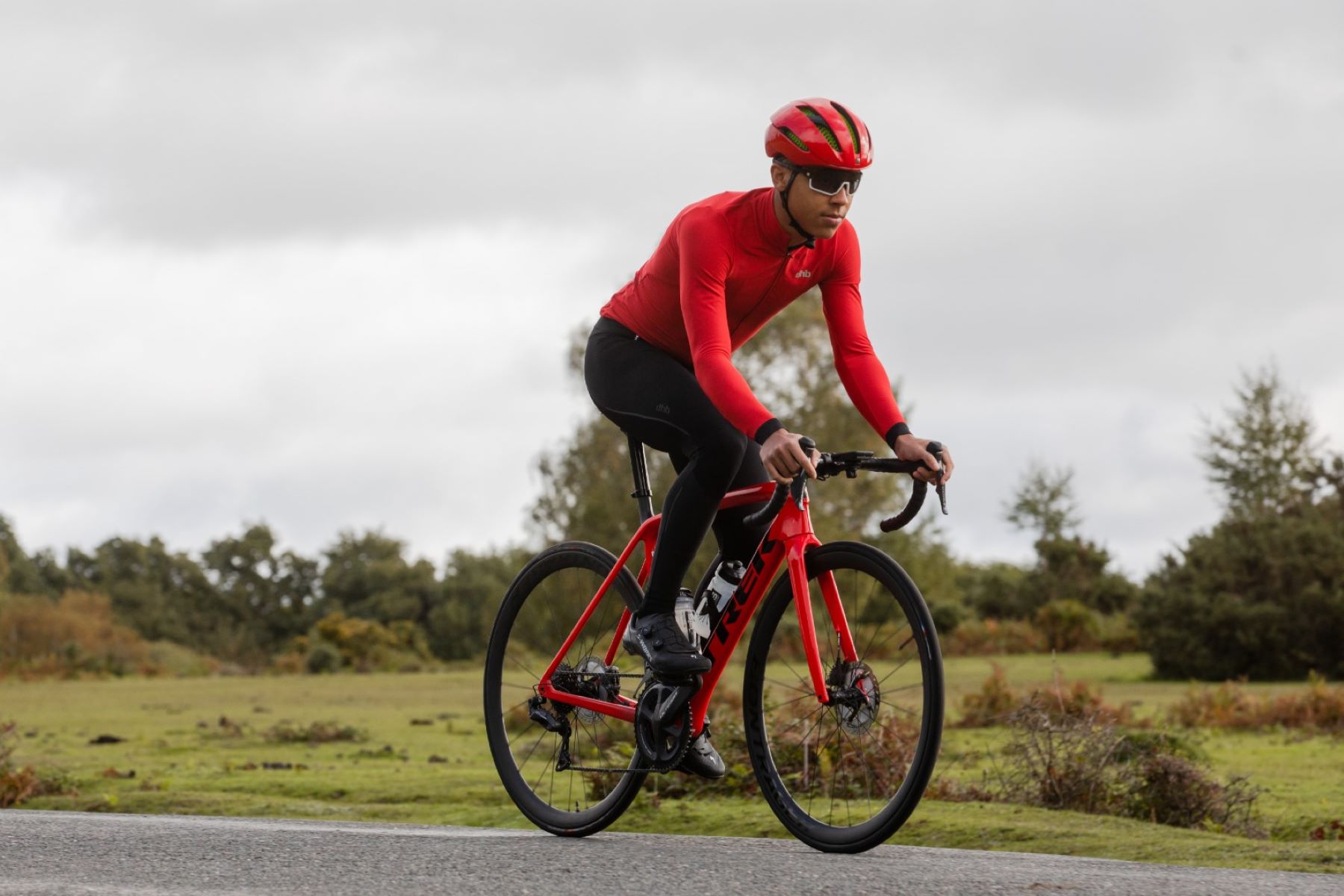

Featured
How To Build Leg Stamina
Modified: January 22, 2024
Learn how to build leg stamina with this featured guide. Increase your endurance and improve your athletic performance with these proven techniques.
Introduction
Welcome to this comprehensive guide on how to build leg stamina. Whether you are an athlete looking to improve your performance or simply want to increase your endurance for everyday activities, having strong and resilient legs is essential. The legs play a fundamental role in our daily lives, supporting us in various activities such as walking, running, jumping, and climbing stairs.
Building leg stamina not only improves our physical capabilities but also enhances our overall fitness and quality of life. Strong legs allow us to engage in dynamic sports and activities without experiencing fatigue or muscle strain. Additionally, leg stamina is important for injury prevention and can help in maintaining proper posture and balance.
In this guide, we will explore various strategies and techniques to effectively build leg stamina. We will cover proper warm-up and stretching exercises, the importance of cardiovascular activities for leg endurance, the role of strength training, and incorporating plyometric and endurance exercises into your routine. Moreover, we will discuss the significance of nutrition for optimal leg stamina and the importance of rest and recovery.
By following the principles outlined in this guide, you will be able to gradually increase your leg stamina, improve your athletic performance, and enhance your overall physical fitness. So, let’s dive in and discover the steps to building strong and resilient legs!
Importance of Leg Stamina
Leg stamina plays a crucial role in our physical performance and overall well-being. Whether we are involved in sports or simply going about our daily activities, having strong and enduring legs can make a significant difference in our lives. Let’s explore some key reasons why leg stamina is important:
- Enhances Athletic Performance: For athletes, having strong leg stamina is essential in achieving optimal performance. Whether it’s long-distance running, cycling, soccer, or basketball, endurance in the legs allows athletes to sustain physical exertion for longer periods. This gives them a competitive edge and the ability to outlast their opponents.
- Improves Overall Fitness: Even if you’re not an athlete, building leg stamina is beneficial for improving overall fitness. Strong legs enable us to engage in activities like hiking, dancing, and other recreational sports with greater ease and enjoyment. The increased stamina allows us to perform these activities for more extended periods without feeling tired or fatigued.
- Protects Against Injuries: Having strong leg muscles can help prevent common injuries such as sprains and strains. Strong muscles provide stability and support to the joints, reducing the risk of injury during physical activities and daily movements. By developing leg stamina, we can decrease the likelihood of sustaining injuries and maintain good musculoskeletal health.
- Improves Posture and Balance: Leg stamina contributes to good posture, proper body alignment, and balance. Strong leg muscles, particularly the ones in the thighs, calves, and glutes, help support the spine and maintain an upright posture. This not only enhances our overall appearance but also reduces the strain on our back muscles, preventing back pain and discomfort.
- Increases Endurance: Building leg stamina improves our overall endurance levels, both in physical activities and daily tasks. By developing the ability to sustain physical exertion, we can perform activities like standing for long periods, walking long distances, and carrying heavy objects without feeling quickly fatigued.
Overall, leg stamina is vital for improving athletic performance, enhancing overall fitness, reducing the risk of injuries, improving posture and balance, and increasing endurance. By understanding the importance of leg stamina, we can effectively prioritize and incorporate activities into our training regimen that will help us build and maintain strong and resilient legs.
Proper Warm-up and Stretching
Before engaging in any exercise or physical activity, it is important to properly warm up and stretch your leg muscles. A proper warm-up increases blood flow to the muscles, raises core body temperature, and prepares the body for the upcoming workout, reducing the risk of injury and improving performance. Additionally, stretching helps improve flexibility, increases range of motion, and prevents muscle stiffness. Here are some key points to consider when warming up and stretching your legs:
- Dynamic Warm-up: Begin your warm-up with dynamic exercises that involve active movements. This can include jogging, walking lunges, leg swings, or high knees. Dynamic warm-up exercises help activate the muscles, increase circulation, and prepare them for more intense activities.
- Static Stretching: After a dynamic warm-up, move on to static stretching exercises targeting the major muscles of your legs. Hold each stretch for 15-30 seconds without bouncing or jerking. Focus on stretching the calves, quads, hamstrings, and hip flexors. Stretching helps improve flexibility, prevent muscle imbalances, and enhance overall muscle function.
- Include Foam Rolling: Consider incorporating foam rolling into your warm-up routine. Foam rolling, or self-myofascial release, helps release muscle tension, improve blood flow, and increase range of motion. Roll the foam roller along your legs, focusing on tight or sore areas, and spend extra time on trigger points.
- Gradual Progression: Gradually increase the intensity and duration of your warm-up and stretching routine over time. This allows your muscles to adapt and become more flexible. Start with lighter stretches and gradually move towards deeper stretches as your muscles loosen up.
- Listen to Your Body: Pay attention to how your body feels during the warm-up and stretching exercises. If you experience pain or discomfort, modify the intensity or technique of the stretches. Always work within your limits and avoid overstretching to prevent injury.
Remember that proper warm-up and stretching are essential components of any leg stamina-building routine. By incorporating dynamic warm-up exercises, static stretches, foam rolling, and gradual progression, you can maximize the benefits of your workouts, improve flexibility, and reduce the risk of muscle strains and injuries. Take the time to properly warm up and stretch your legs, and you’ll be on your way to building stronger and more resilient leg muscles
Balancing Cardiovascular Exercise
Cardiovascular exercise is an essential component of building leg stamina. Engaging in regular cardio workouts helps improve cardiovascular health, increases lung capacity, burns calories, and enhances overall endurance. However, it is important to strike a balance between the intensity and duration of cardio workouts to prevent overexertion or muscle fatigue. Here are some key points to consider when balancing cardiovascular exercise:
- Vary Intensity: Incorporate different levels of intensity into your cardio workouts. Mix high-intensity interval training (HIIT) sessions with steady-state cardio. HIIT workouts involve short bursts of intense activity followed by periods of rest or low-intensity activity, while steady-state cardio involves maintaining a moderate intensity throughout the workout. This variation helps improve both aerobic and anaerobic endurance.
- Include Low-Impact Options: To reduce the stress on your joints and muscles, incorporate low-impact cardio exercises into your routine. Activities such as swimming, cycling, or using an elliptical machine are gentle on the joints while still providing an effective cardiovascular workout. This allows you to give your leg muscles a break from high-impact activities like running or jumping.
- Gradually Increase Duration: Start with shorter cardio sessions and gradually increase the duration over time. This allows your body to adapt to the demands of cardiovascular exercise and prevents overexertion. Aim for at least 150 minutes of moderate-intensity cardio or 75 minutes of vigorous-intensity cardio per week, as recommended by the American Heart Association.
- Listen to Your Body: Pay attention to your body’s signals during cardio workouts. If you experience pain, dizziness, or excessive fatigue, it may be a sign to ease up or take a rest day. Pushing through extreme discomfort can lead to injury or burnout, so it’s important to listen to your body and adjust the intensity or duration of your cardio workouts accordingly.
- Cross-Training: Incorporate cross-training into your routine to work different muscle groups and prevent overuse injuries. Incorporate activities such as cycling, swimming, or strength training to engage different muscles and give your legs a break from repetitive movements.
By balancing cardiovascular exercise in terms of intensity, duration, and impact, you can effectively build leg stamina while minimizing the risk of overexertion or injury. Remember to vary your cardio workouts, gradually increase duration, listen to your body, and incorporate cross-training activities to optimize your leg stamina-building routine.
Strength Training for Leg Stamina
Strength training is a crucial component of building leg stamina. It helps develop and strengthen the muscles in your legs, improves endurance, and enhances overall power and performance. Incorporating a variety of strength training exercises into your workout routine will target different muscle groups and contribute to the development of well-rounded leg stamina. Here are some key points to consider when incorporating strength training for leg stamina:
- Compound Exercises: Focus on compound exercises that engage multiple muscle groups simultaneously. Squats, lunges, deadlifts, and step-ups are examples of compound exercises that target the glutes, quadriceps, hamstrings, and calves. These exercises not only build strength but also improve coordination and stability.
- Progressive Overload: Gradually increase the weight or resistance used in your strength training exercises over time. This concept of progressive overload stimulates muscle growth and endurance. Push yourself to lift heavier weights or increase resistance gradually to challenge your leg muscles and stimulate ongoing improvements.
- Isolation Exercises: In addition to compound exercises, incorporate isolation exercises that target specific leg muscles. Leg curls, leg extensions, calf raises, and hip abductions are examples of isolation exercises that focus on strengthening individual muscles in the legs. These exercises help improve muscle balance and address any muscle imbalances or weaknesses.
- Plyometric Training: Integrate plyometric exercises into your strength training routine to improve power and explosive strength. Plyometrics involve quick and explosive movements such as box jumps, jump squats, and burpees. These exercises activate fast-twitch muscle fibers, which are responsible for generating power and speed.
- Proper Form and Technique: Prioritize maintaining proper form and technique in all your strength training exercises. This not only ensures optimal muscle engagement but also reduces the risk of injury. If you are new to strength training, consider working with a qualified trainer to learn the correct form and technique.
Strength training is essential for building leg stamina, and incorporating a combination of compound and isolation exercises, along with progressive overload and plyometric training, will help you achieve your goals. Remember to focus on proper form and technique to maximize the benefits and minimize the risk of injury. By consistently challenging and strengthening your leg muscles, you will see improvements in your leg stamina and overall physical performance.
Plyometric Exercises
Plyometric exercises are an excellent way to improve leg stamina and explosive power. These exercises involve quick, powerful movements that utilize the stretch-shortening cycle to generate force and enhance muscular performance. Plyometrics can be beneficial for athletes and individuals looking to improve their speed, agility, and overall leg strength. Here are some key points to consider when incorporating plyometric exercises:
- Box Jumps: Box jumps are a classic plyometric exercise that targets the lower body. Start by standing in front of a sturdy box or platform. Lower into a quarter squat and then explosively jump onto the box, landing softly in a squat position. Step back down and repeat for the desired number of reps. Box jumps improve explosive power, vertical jump height, and leg strength.
- Jump Squats: Jump squats are an effective plyometric exercise that targets the quadriceps, hamstrings, and glutes. Begin by standing with your feet shoulder-width apart. Lower into a squat position and explode upwards, jumping as high as possible. Land softly in a squat and immediately repeat the movement. Jump squats help develop lower body power and improve overall leg stamina.
- Lateral Bounds: Lateral bounds are effective for enhancing lateral strength and agility. Begin by standing with your feet shoulder-width apart. Leap sideways with your right leg, landing softly on your right foot while swinging your left leg behind you. Immediately explode back to the left, landing on your left foot. Repeat for the desired number of reps. Lateral bounds improve lateral power, stability, and balance.
- Tuck Jumps: Tuck jumps are a challenging plyometric exercise that targets the abdominal muscles, as well as the quadriceps and glutes. Start by standing with your feet hip-width apart. Jump as high as possible, bringing your knees towards your chest, and extending your arms towards your shins. Land softly and immediately go into the next repetition. Tuck jumps improve explosive power, core stability, and lower body strength.
- Burpees: Burpees are a dynamic full-body exercise that incorporates a plyometric jump. Start in a standing position, then drop down into a push-up position. Perform a push-up and then swiftly jump your feet back towards your hands. Explosively jump upwards, reaching your hands overhead. Repeat for the desired number of reps. Burpees are great for building overall endurance, leg power, and cardiovascular fitness.
When incorporating plyometric exercises into your leg stamina-building routine, it’s important to start with proper form and gradually increase the intensity and difficulty. Begin with lower-intensity variations and progressively advance to more challenging exercises. It is also essential to warm up adequately and strengthen the muscles surrounding your joints to prevent injuries. Consistently incorporating plyometric exercises into your training will help improve leg stamina, explosiveness, and overall athletic performance.
Endurance Training for Legs
Endurance training is crucial for developing leg stamina and improving your ability to sustain physical activity for extended periods. By focusing on endurance exercises for your legs, you can enhance your cardiovascular system’s efficiency, build muscular endurance, and increase your overall stamina. Here are some key points to consider when incorporating endurance training for your legs:
- Long-Distance Running: Long-distance running is an excellent endurance exercise for your legs. Start by gradually increasing your running distance, aiming for longer durations over time. This type of aerobic exercise improves cardiovascular fitness, strengthens leg muscles, and enhances your endurance capacity.
- Cycling: Cycling is a low-impact endurance exercise that targets your leg muscles while reducing stress on your joints. Whether you choose outdoor cycling or stationary bike sessions, gradually increase your cycling duration and intensity. Cycling helps improve cardiovascular health, lower body endurance, and leg muscle tone.
- Hiking or Walking: Incorporate hiking or brisk walking into your endurance training routine. These activities engage the leg muscles, promote cardiovascular health, and help improve overall endurance. Gradually increase the distance and intensity of your hikes or walks to challenge your leg stamina and build endurance.
- Stair Climbing: Incorporating stair climbing into your workout routine is an effective way to target your leg muscles, improve cardiovascular endurance, and enhance your leg stamina. Whether using a stair climber machine or climbing actual stairs, gradually increase the duration and intensity of your stair climbing sessions over time.
- HIIT Training: High-Intensity Interval Training (HIIT) can also be beneficial for endurance training. Incorporate exercises like squat jumps, burpees, or jumping lunges in intervals of high intensity followed by short periods of rest. This type of training challenges your leg endurance, cardiovascular fitness, and overall stamina.
Remember to start endurance training at a level suitable for your current fitness level and gradually progress over time. Incorporate a variety of endurance exercises into your routine to work different leg muscles and prevent boredom. Consistency and gradual progression are key to improving leg stamina and overall endurance. By consistently engaging in endurance training for your legs, you will notice improvements in your ability to sustain physical activity and endure longer workouts or physical demands.
Proper Nutrition for Leg Stamina
Proper nutrition is essential for supporting optimal leg stamina and overall physical performance. The right balance of nutrients can provide the energy, endurance, and muscle recovery needed to sustain leg stamina-building activities. Here are some key points to consider for proper nutrition:
- Adequate Caloric Intake: Ensure you are consuming enough calories to fuel your leg stamina-building activities. The calories you consume should match the energy you expend during exercise. Consult with a healthcare professional or registered dietitian to determine the appropriate caloric intake for your activity level and health goals.
- Carbohydrates: Carbohydrates are essential for providing energy during exercise. Focus on consuming complex carbohydrates such as whole grains, fruits, vegetables, and legumes. These carbohydrates provide a steady release of energy, helping sustain your leg stamina throughout your workouts.
- Protein: Protein is crucial for muscle repair and recovery. Include lean sources of protein in your diet, such as chicken, fish, tofu, beans, and Greek yogurt. Aim to consume an adequate amount of protein to support the growth and repair of your leg muscles after intense workouts.
- Hydration: Proper hydration is vital for maintaining leg stamina. Dehydration can lead to decreased performance and muscle cramps. Ensure you drink enough water throughout the day and during your workouts to stay adequately hydrated. Drinking water before, during, and after exercise is essential to replenish fluids lost through sweat.
- Electrolytes: During intense or prolonged exercise, you may lose electrolytes through sweat. Replenishing these electrolytes is essential for maintaining proper muscle function and endurance. Incorporate electrolyte-rich foods or sports drinks that contain sodium, potassium, magnesium, and calcium to replace these essential minerals.
- Timing of Meals: Plan your meals and snacks strategically to provide a steady source of energy for your leg stamina-building activities. Eat a balanced meal containing carbohydrates, protein, and fats a few hours before your workout to ensure adequate fuel availability. Additionally, consume a post-workout snack or meal within the first hour after exercise to aid muscle recovery.
- Supplements: While a balanced diet should provide you with the necessary nutrients, certain supplements can support leg stamina and muscle recovery. Consult with a healthcare professional or registered dietitian to determine if any supplements, such as creatine or branched-chain amino acids (BCAAs), may be beneficial for your specific needs.
Proper nutrition is essential for supporting leg stamina-building efforts. By maintaining a well-balanced diet that includes adequate calories, carbohydrates, protein, hydration, and electrolytes, you can fuel your workouts, aid in muscle recovery, and optimize your leg stamina-building potential.
Rest and Recovery
Rest and recovery are often overlooked but crucial aspects of building leg stamina. Giving your body time to rest and recover is essential for optimal performance, injury prevention, and long-term progress. Here are some key points to consider when it comes to rest and recovery:
- Quality Sleep: Prioritize getting enough quality sleep every night. Sleep is a critical time for your body to repair and regenerate. Aim for seven to nine hours of sleep each night to support muscle recovery, hormonal balance, and overall physical and mental well-being.
- Active Recovery: Incorporate light exercises and activities on your rest days. This can include gentle stretching, yoga, or low-impact activities like walking or swimming. Active recovery promotes blood flow, reduces muscle soreness, and aids in the removal of waste products from your muscles.
- Listen to Your Body: Pay attention to any signs of fatigue, excessive muscle soreness, or pain. Pushing through extreme exhaustion or pain can lead to injuries and hinder your progress. Take rest days or modify your workouts when needed to allow your body to recover and prevent overtraining.
- Foam Rolling/Stretching: Incorporate regular foam rolling or stretching sessions to improve flexibility, increase circulation, and relieve muscle tension. These techniques can help reduce muscle soreness, prevent stiffness, and enhance recovery from intense workouts.
- Nutrition for Recovery: Proper nutrition plays a critical role in recovery. Consume a balanced diet that includes carbohydrates, protein, and healthy fats to replenish energy stores and support muscle repair. Additionally, post-workout meals or snacks that contain a combination of carbohydrates and protein can optimize recovery by promoting muscle protein synthesis.
- Rest Days: Schedule regular rest days into your training program. Rest days allow your muscles and connective tissues to recover, repair, and grow stronger. Use this time to engage in activities that promote relaxation, such as meditation, gentle stretching, or spending time with loved ones.
- Recovery Techniques: Consider incorporating additional recovery techniques like ice baths, compression garments, or massage therapy into your routine. These techniques can help reduce inflammation, accelerate muscle recovery, and improve overall recovery quality.
Rest and recovery are essential components of any leg stamina-building program. By prioritizing quality sleep, incorporating active recovery, listening to your body, performing foam rolling or stretching, focusing on proper nutrition, scheduling rest days, and utilizing recovery techniques, you can optimize your leg stamina-building efforts and minimize the risk of overtraining or injuries.
Conclusion
Building leg stamina is a process that requires dedication, consistency, and a well-rounded approach. By incorporating proper warm-up and stretching techniques, balancing cardiovascular exercise, engaging in strength training and plyometric exercises, and focusing on endurance training, you can effectively increase your leg stamina and improve your overall physical performance.
Proper nutrition plays a vital role in supporting leg stamina-building efforts. Ensuring an adequate caloric intake, consuming a balance of carbohydrates, protein, and fats, and staying hydrated are all key factors in fueling your workouts and promoting muscle recovery.
- Remember to prioritize rest and recovery in your leg stamina-building journey. Quality sleep, active recovery, proper nutrition for recovery, and regularly scheduled rest days are all essential for allowing your body to repair, rebuild, and grow stronger.
- As with any fitness program, it’s important to listen to your body. Pay attention to any signs of fatigue, pain, or overexertion, and make adjustments as needed. Pushing yourself beyond your limits can lead to injury and hinder your progress.
- Lastly, be patient and consistent. Building leg stamina takes time and effort. Set realistic goals, track your progress, and celebrate your achievements along the way. Remember that building strong and resilient legs is a journey, and with dedication and perseverance, you will continue to improve and reap the rewards of your hard work.
So, lace up your sneakers, fuel your body with proper nutrition, and embark on your leg stamina-building journey. With the knowledge and strategies outlined in this guide, you have the tools to build strong, enduring legs and improve your overall physical performance. Take the first step today towards achieving your leg stamina goals and enjoy the incredible benefits that come with having resilient legs.








